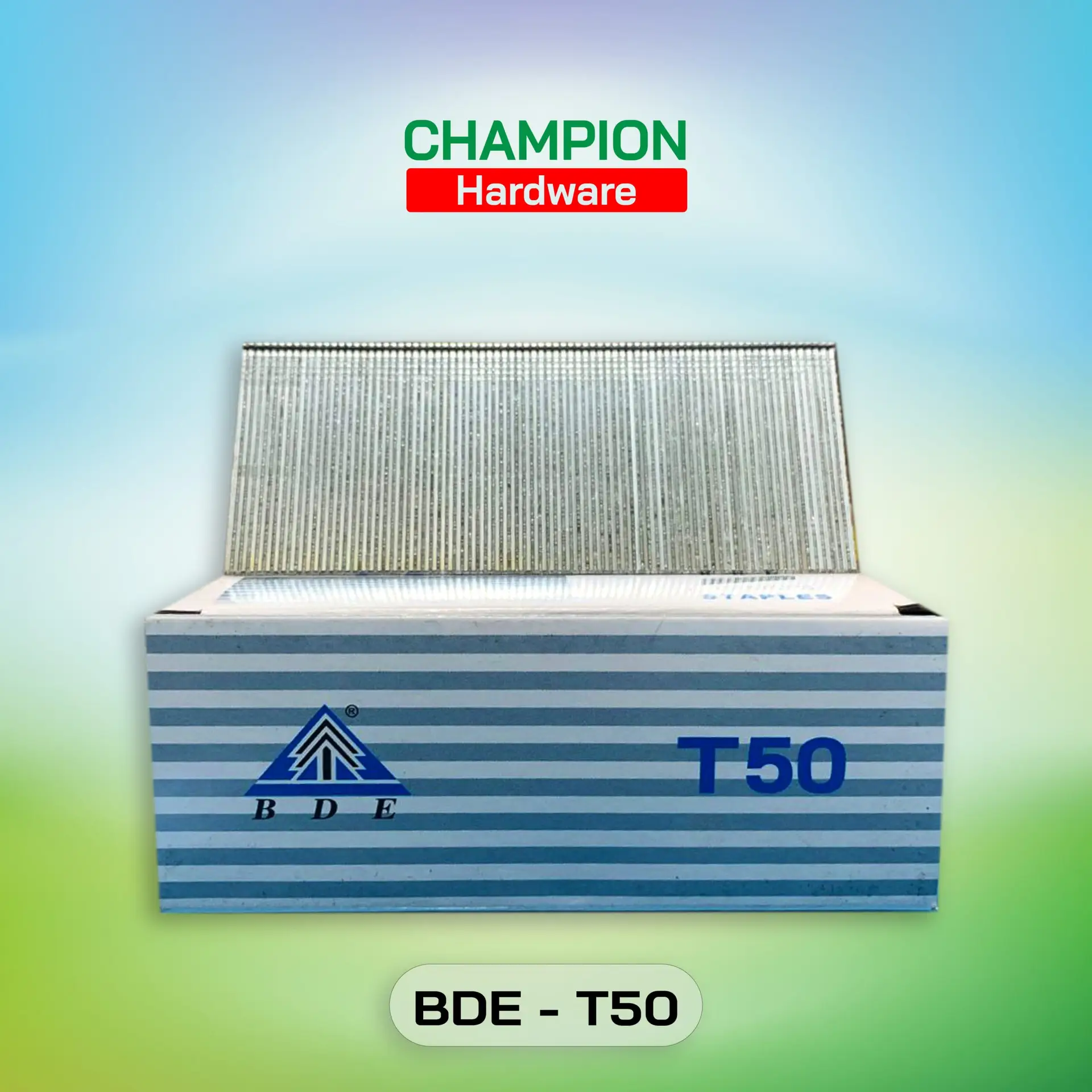চ্যাম্পিয়ন হার্ডওয়্যার – আপনার আসবাবপত্র তৈরির নির্ভরযোগ্য সঙ্গী!
ঘরের সাধারণ ফার্নিচার হোক বা ছোটখাটো কাঠের কাজ, সঠিক হার্ডওয়্যার ছাড়া টেকসই কিছুই সম্ভব নয়।
চ্যাম্পিয়ন গ্রুপের পক্ষ থেকে আমরা নিয়ে এসেছি উন্নত মানের Champion Hardware, যা ফার্নিচার তৈরিতে ব্যবহৃত হয় — যেমন চেয়ার, টেবিল, আলমারি, খাট, তাকসহ আরও অনেক কিছু।

মজবুত ও টেকসই

সহজ ইনস্টলেশন

সাশ্রয়ী মূল্য
Upholstery staples come in several different lengths. The most commonly used lengths are 1/4″, 3/8″ and 1/2″. we like to keep a box of each at my station at all times so we can quickly swap out sizes when working on different parts of a project. Let me elaborate on how we use each of these staples and how each size can make all the difference!





1/4″ staples are my favorite to use. W try to use this shorter length any time we am not stapling through too many layers of materials, and they’re great when attaching burlap, Dacron, or any lightweight fabrics. We love this staple length because they are super easy to remove if you need to make adjustments, while holding the materials in place. If you ever need to strip your project in the future, it will be so much easier and less damaging to the frame if you use these short staples. To ensure your materials are adequately secured, give your fabric a little tug to test the holding strength.
We like to switch to 3/8″ staples once the layers start to accumulate. As you can see above, there are quite a few layers happening. In this situation, 1/4″ staples aren’t long enough to adequately go through all of the layers and the wood.
Now onto the 1/2″ staples! We like to use this length when dealing with materials that are structural or supportive, such as a webbing on a seat. The extra length really holds the webbing in place. Also, when working with heavier or thicker fabrics such as velvet or chenille, 1/2″ staples are handy because they’ll easily pierce and hold multiple layers on the wood.
Sometimes you’ll find the frame of antique furniture, or furniture that has been reupholstered several times, is very brittle and porous. Shorter staples will not grab the wood well enough, so 1/2″ staples are the best choice in this scenario, too.
We do Our best to only use 1/2″ staples when We absolutely need to. If you’ve ever had the pleasure of stripping a piece of furniture that was upholstered using only 1/2″ staples, you will understand why. They usually snap upon removal, leaving sharp little barbs behind that must be pulled out using precision pliers. Or, they could be hammered back into the frame so they don’t cut you or snag the fabric. It’s time consuming and frustrating, for sure!
For Staples for Furniture contact @Champion Group
Follow us on Facebook@Championgroupbangladesh
 Champion Orthopedic Mattress
৳ 6,300 – ৳ 13,585Price range: ৳ 6,300 through ৳ 13,585
Champion Orthopedic Mattress
৳ 6,300 – ৳ 13,585Price range: ৳ 6,300 through ৳ 13,585
 Bed Sheets Collection 1
৳ 1,050
Bed Sheets Collection 1
৳ 1,050
 Bed Sheets Collection 2
৳ 1,020
Bed Sheets Collection 2
৳ 1,020
































Reviews
There are no reviews yet.